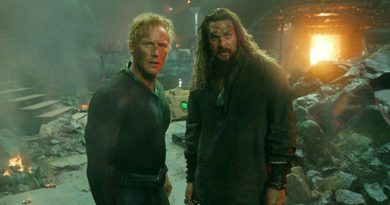Capsule Review: The Boy and the Heron 君たちはどう生きるか (2023)
Looks like Hayao Miyazaki couldn’t stay retired after all. Ten years ago, he announced his retirement and The Wind Rises would mark his final feature. But even before that, he previously announced plans to retire on two separate occasions. In 1997, he did it once after Princess Mononoke and again in 2001 following the release of Spirited Away. Now that he has returned, I was looking forward to The Boy and the Heron.
Miyazaki, who also wrote the screenplay, opens his movie with a tragedy: The year is 1943 and we first see 12-year-old Mahito Maki (voiced by Soma Santoki) panicked after learning about the hospital fire that eventually kills his mother. The whole event happened so fast. Miyazaki mirrors Mahito’s state of disorientation as he rushes to the hospital with all the background noises and images of engulfed flames depicted in an abstract-realism style.
It doesn’t take long before Mahito’s father Shoichi (Takuya Kimura) starts afresh by remarrying his late wife’s younger sister, Natsuko (Yoshino Kimura). Together with Mahito, who is still grieving over his mother’s death, they move deep into the countryside. From there, Natsuko takes Mahito to his new home and introduces the old maids.
Long story short, Mahito encounters a mysterious giant heron one day. The bird can’t seem to stop bothering him. Mahito soon discovers an old tower built by his granduncle and this is where he subsequently enters into an alternate dimension, which immediately reminds me of Alice in Wonderland style.
Likewise, Miyazaki excels in its old-school 2D animation. The visuals look stunning regardless of the background details or the character designs. The alternate reality is quintessential Miyazaki: an army of giant man-eating parakeets and above all, the cute little white creatures shaped like bubbles called Warawara. The story also introduces one of the best supporting characters in The Boy and the Heron: a tough adventurer named Kiriko (Ko Shibasaki), where we see Mahito teaming up with her on a surrealistic adventure.
Now, for an anime that deals with grief, life and mortality, I was expecting The Boy and the Heron to be an emotionally penetrating experience. But what I have here is a strangely muted and even hollow storytelling, lacking both emotional and dramatic impact to make me root for Mahito’s character arc. The glacial pace doesn’t help either with the story feels like it was just drifting around in circles.
I can’t help but feel it was a missed opportunity not to explore the relationship between Mahito and his mother. She already died from the beginning and Miyazaki hardly bothers to give us, say prominent flashbacks or a backstory that at least establishes the mother-son bond. Without a solid reason to back up why we should feel pity about Mahito’s grievance, it’s even difficult for me to invest in his character’s determination to seek the answer he’s been dying to know regarding his mother, where the heron claims she is alive.
Speaking of the heron, the giant talking bird (Masaki Suda) is a quirky and mysterious character who ends up in an odd pairing with Mahito is among the best things in the movie. And yet, it’s a pity the English title of The Boy and the Heron feels misleading since the movie isn’t primarily focusing on the (mis)adventures of Mahito and the heron, who turns out to be a cranky little man with a bulbous nose living inside the body of a giant bird. The Japanese title, which translates as How Do You Live? sounds better by comparison.





